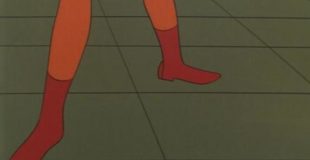[ad_1]
Animation is hard. Whether you’re using Synfig Studio, OpenToonz, StopGo, Krita, or Blender, it’s a complex process. You have to write the story, storyboard the action, record the soundtrack, and then you have to actually animate. That means drawing everything, even the stuff you don’t care about, and then tweening everything hundreds and hundreds of times. Then you have to string all the shots together, possibly edit it for pacing, and finally release.
It’s nice to think that animation is a labor of love, but sometimes time and money outweigh all that passion, and you just have to get the job done.
As it turns out, this is hardly a new problem. Cheating in animation is scorned by the animation elite, arguably with good reason: When you cheat, an alert audience knows it. The really great animation in the world looks great because the animators didn’t cheat…much. There’s a definite trade-off, but that’s part of the fun of being an artist: You get to weigh the benefits of carefully hand-crafted fine art against potential compromises and the time and money they save you.
To learn how to cheat, you need look no further than the Saturday morning cartoons of your childhood. There’s an art form to those quirky cartoons, though, filled with animators’ cheats and silly voice acting, and today’s animators can learn a lot from them.
Unfortunately, many of these works of art have not been well-preserved because nobody expected adults in 20 years to want to purchase copies of the cartoons produced mainly to sell breakfast cereals and action figures. However, you can usually find poorly preserved copies of them on DVDs in the bargain bin of your local video store, and possibly even on the Internet Archive.
Sit down and watch them closely. Leave the sound on, because you’re not just watching the drawings and edits, you’re looking at the whole presentation. Separate yourself from the stories and watch how they were assembled.
1. Close-ups and Angle-ons
In the proto-anime Marine Boy (or Aqua Boy, depending on your translator), the eponymous hero gets caught in an ancient subterranean temple. He’s assaulted by a series of traps in what is an authentically exciting action sequence, narrowly escaping with his life. The remarkable thing about the sequence is that it’s done in a series off close-ups and isolated angles.
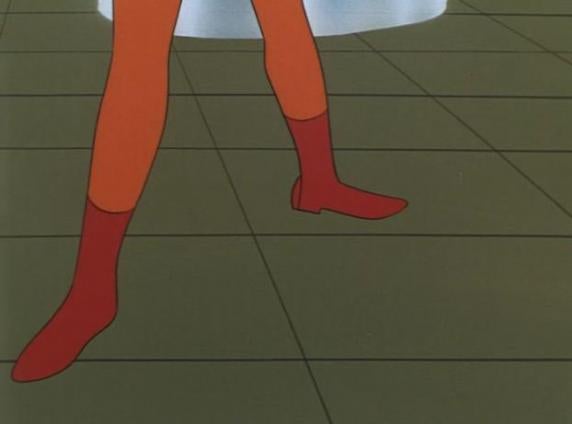
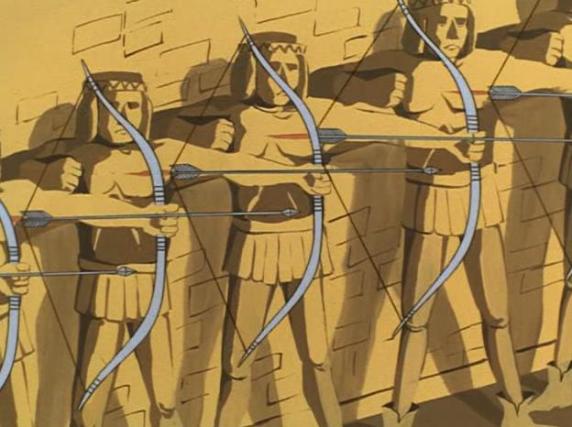
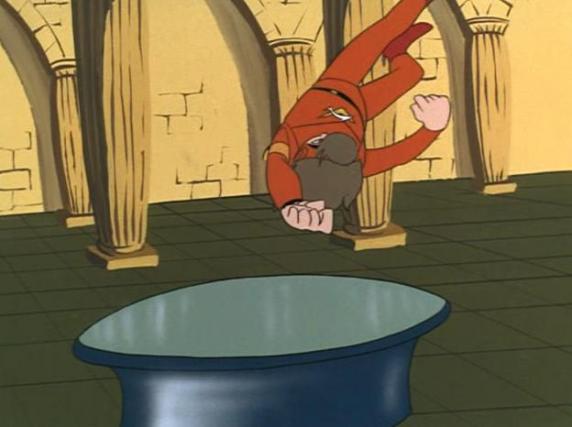
By intercutting shots of traps being released with Marine Boy jumping into the air or behind columns, the animators successfully convey the threats and the daring escapes without ever having to re-draw the entire set or worry about the actual layout of the temple.
2. Sound matters
Significantly, the Marine Boy escape scene is set to Bach’s Toccata and Fugue in D Minor, providing just the right amount of macabre class it deserves. Just by carefully choosing the music, the animators transform the scene from a cheap action sequence to something almost elegant.
Looney Tunes is possibly one of the most famous cartoon series for sound design. Think of how many times we’ve missed out on seeing what contraption Wile E. Coyote is building, hearing only frantic sawing and hammering until the final reveal. It’s not just effective comedic timing, it’s sensible animation. They could have just drawn a big dust cloud or a series of blurred body parts and tools to show that lots of activity is happening. Instead, they often chose to show nothing, use only sound effects, and save the reveal for later.
3. Dictate the action, reveal the result
Drawing takes time and skill. Many animators have the skill, but few ever have enough time. Turns out, there’s a workaround for when you need to show something happening onscreen but can’t be bothered to draw all the complex action that makes it happen. It’s the art of the well-placed cutaway.
In an episode of The Impossibles, hero Multi-Man is confronted with a killer octopus. He uses his super power to clone himself seven times, each iteration taking hold of a leg with the aim to tie the octopus in knots. Deciding that that’s too much to coordinate, the animators efficiently cut away to a reaction shot of an onlooker, then end the sequence with the results of the complex action.
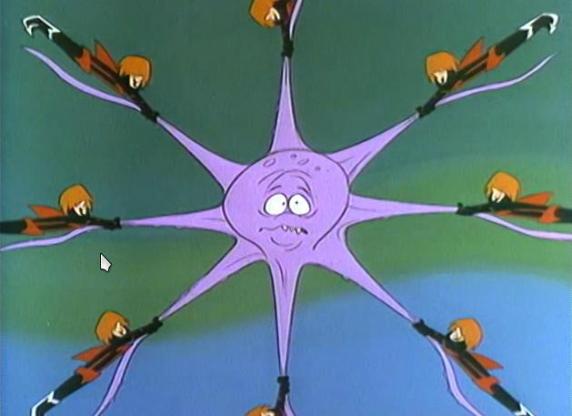
“We have you now.”
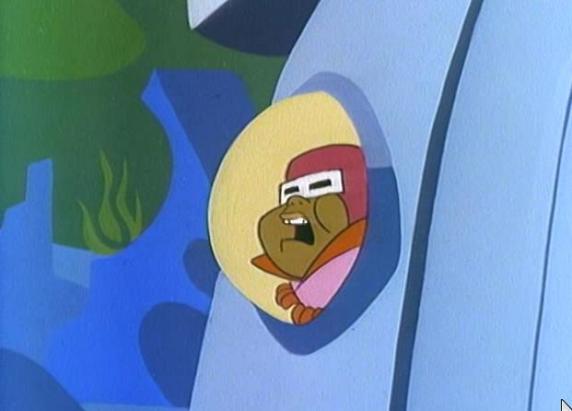
“He’s tying it in a knot!”
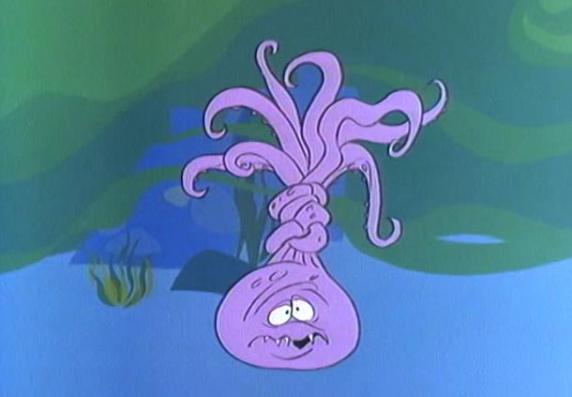
And the result.
The lesson here: if you can’t draw an action, cut away from it. Have an onlooker describe what’s happening for the audience, then cut back to the aftermath. To even the least imaginative viewer, the power of suggestion is strong.
5. Reuse shots
The Herculoids and Star Trek: The Animated Series were both very skillful in reusing shots (although it’s arguable that the shots were not always reused skillfully).

Dialogue
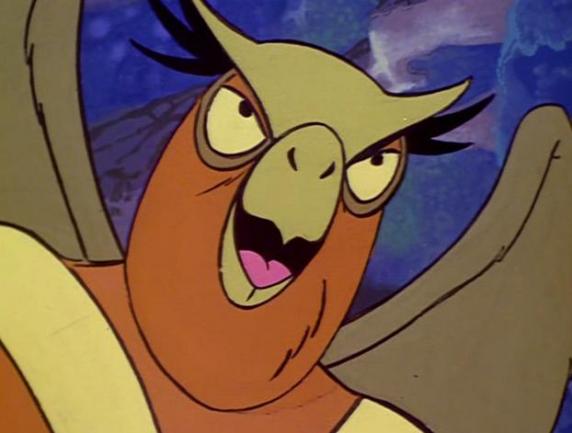
Close-up

Same clip, new dialogue
The idea is simple: Animate a five-second clip, interject a closeup, cut back to the first shot again with new dialogue. Repeat until the end of exposition. Bonus points if you use the closeup as an excuse to get out of animating all the lines the off-screen character is speaking.
This is an enduring trick, still seen today in video games, where characters are given a few sequences of action, which are thrown into an animation loop during exposition. I assume the hope is that the actions and words will gain additional meaning through synchronicity, but it’s the same trick and it’s hard to miss. Of all the dirty animation tricks, this is probably the dirtiest, but it’s also one of the most sensible. There are only so many ways you can animate exposition.
The trick works for more than just exposition, though. Advancing armies, flying spacecraft, flowing rivers, grazing livestock, and much more can be reused and recycled to cut down on animation time.
6. Loop
Loops are so conventional that they almost don’t qualify as a cheat, but they’re still an important principle to learn. Synfig has several filters to assist in looping and other low-level simulations of physics and effects.
The idea is similar to reusing shots, but on a smaller scale.
In the Sub Swiper episode of Secret Squirrel, a ship is docked, motionless with the waters lapping at its hull. Using advanced technology, Secret Squirrel’s evil nemesis causes the ship to turn invisible. The water continues to ripple around the hull, looping constantly throughout the scene.
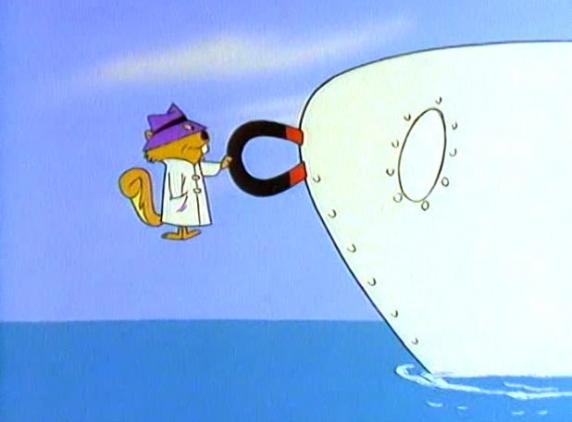
Ripple loop
You’ll have seen similar examples in shots with characters sitting motionless as a radio blasts exposition at them. Electric-looking “sound waves” are the only thing animated over an otherwise still frame.
For 24 frames of animation, the animators get several seconds of constant motion on a detail that most people won’t even register. It’s a thrifty way to inject life into a scene that has mostly non-moving components.
7. Animated stills
In a way, the alternative to looping is making the conscious choice to not animate at all. This is especially common in long shots. For example, in an establishing shot from The Impossibles, an upper-class party consists of one painted frame with no motion whatsoever. To imply motion, the camera zooms slowly into the setting, and then cuts to a closeup of someone at the party.
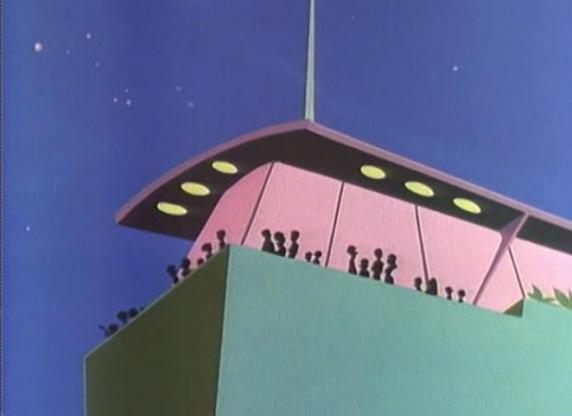
No motion here
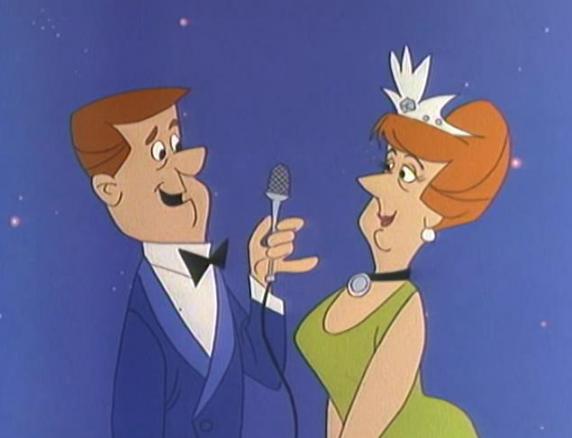
Motion.
With one still frame, the animators not only establish that there’s a party, but they also pardon themselves from ever having to draw crowds once they cut into the interior. After all, you know there’s a party going on because you saw the silhouettes from outside, so you hardly need proof once you’re inside to believe that a party’s happening.
9. Scroll and re-scroll
Backgrounds and sets are the things filmmakers are always trying to convince themselves that no one notices, and besides, how can anyone possibly be watching the background when the story’s so engaging?
As long as you can believe that, you’ll have no problem drawing two or three screens worth of a background, and then scrolling and re-scrolling it to imply movement. Ideally, nobody will notice that the same tree or building has passed by 10 times during the 15-second shot.
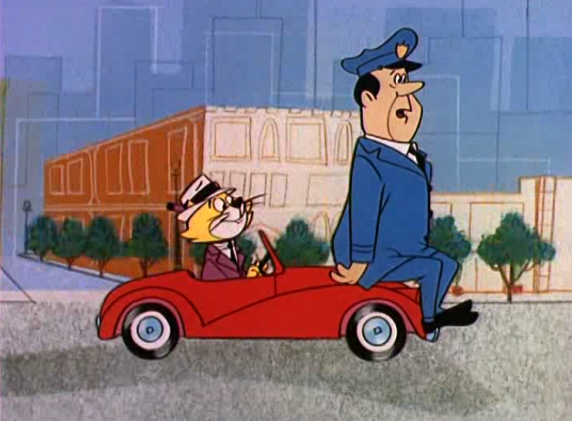
Background
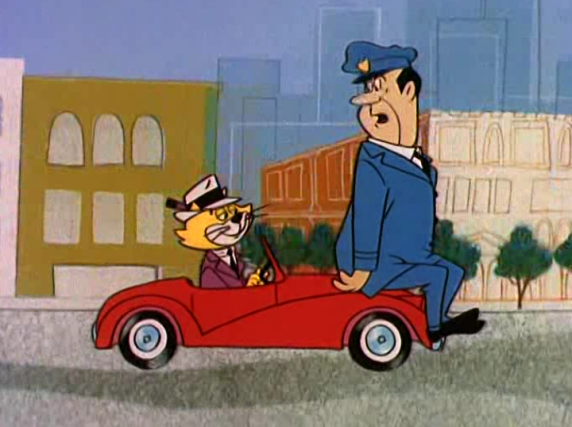
Same background
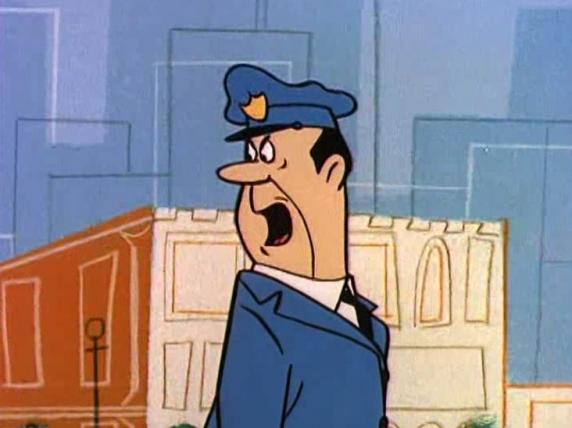
And again in the close-up
This is a common trick, and it’s pretty ugly, but it’s a great time saver.
10. Spend your time on hero assets
There’s little doubt that the 1990s’ Animated Batman series is one of the finest animated works created, let alone the finest Batman incarnation ever set to motion. For an afterschool program meant for kids, it didn’t cheat as much as one might expect, and the ways that it did cheat were elegant and largely stolen straight out of low-budget film noir.
Broadly, the important trick is to spend more time drawing the important parts of your frame and finishing the rest of your work quickly. This can be done surprisingly well. In Batman, the animators appropriately tended to use darkness. What they didn’t feel like drawing, they hid in shadow.
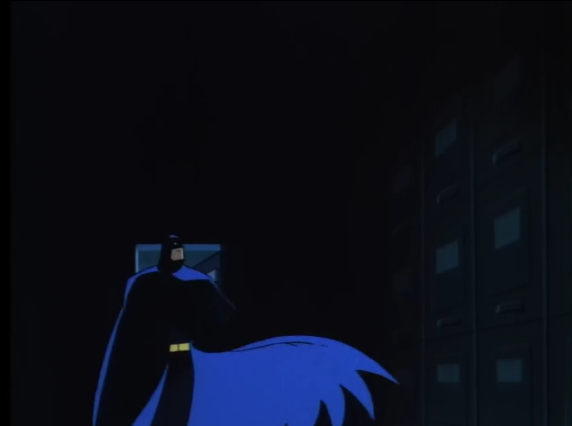
A door and some filing cabinets, and the scene is set.
The cheat isn’t only for background assets. In some shots, the artwork is downright minimalist.

A shot in the dark.
In Looney Tunes, coincidentally another Warner Brothers work, quick and dirty backgrounds were elevated to legitimate abstract art.
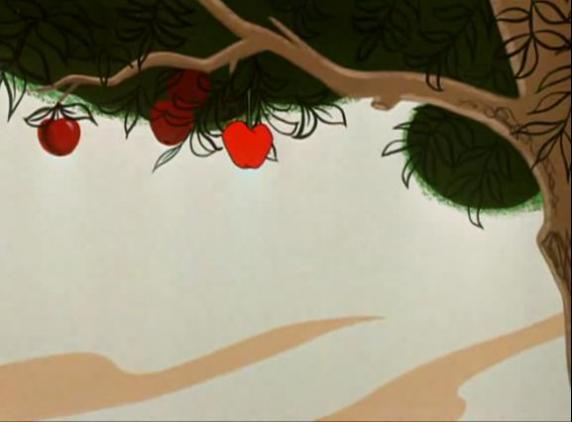
Tree
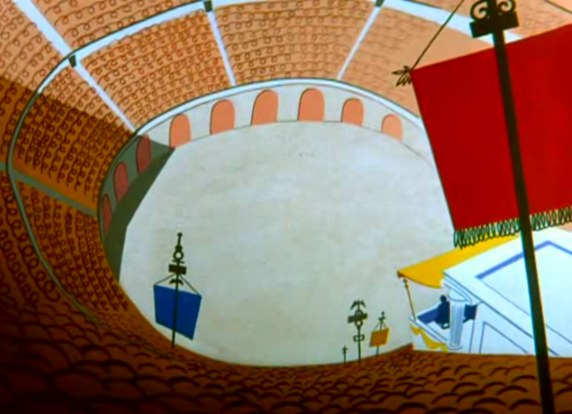
Colosseum
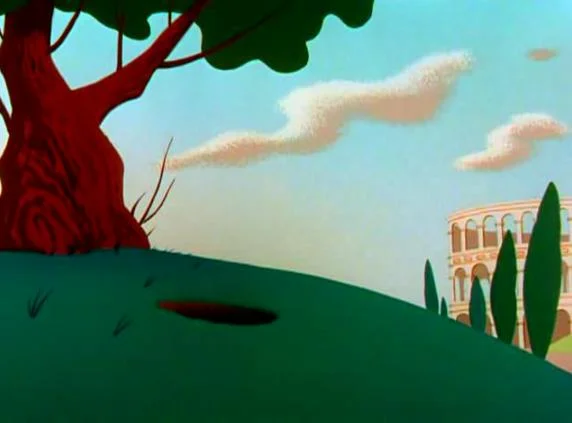
Exterior
But that’s cheating
The great thing about all these cheats are that none of them take away from a good story. In some cases, they even add to the artistry, or at least the character, of the work.
I love looking at animation that’s so meticulous that every frame could be printed and hung on the wall, but in the real world of independent production, that’s not always a realistic goal. If you’re telling your story and telling it well, then don’t worry about using a few cheats. If nothing else, someone just might write an article about it 40 years after the fact, so make those cheats good and dirty.
And by all means, make it happen with open source.
All images are screenshots by the author, published under fair use.
[ad_2]
Source link
